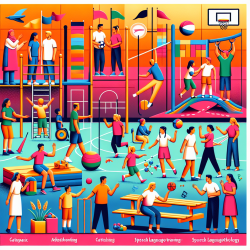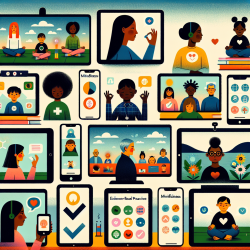Introduction
In the realm of speech-language pathology and child development, physical activity is a crucial component. The recent study titled "Association of car ownership and physical activity across the spectrum of human development: Modeling the Epidemiologic Transition Study (METS)" sheds light on how car ownership impacts physical activity levels across various socioeconomic contexts. This blog will explore the implications of these findings and how practitioners can leverage this information to enhance outcomes for children.
Understanding the Study
The METS study analyzed data from 2,101 adults aged 25-45 across five sites with varying levels of economic development: the United States, Seychelles, Jamaica, South Africa, and Ghana. The primary focus was on the relationship between car ownership and moderate to vigorous physical activity (MVPA), measured using accelerometers. Socioeconomic factors such as income, education, and material goods were also considered.
Key Findings
- Car ownership was consistently associated with lower levels of MVPA across all sites.
- In the U.S., car owners had 24.3 fewer minutes of MVPA per day compared to non-car owners.
- In non-U.S. sites, car owners had an average of 9.7 fewer minutes of MVPA than non-car owners.
- Physical activity levels were highest in South Africa and Ghana, despite lower socioeconomic development compared to the U.S.
Implications for Practitioners
For practitioners in speech-language pathology and child development, these findings highlight the importance of considering environmental and socioeconomic factors in promoting physical activity. Here are some actionable insights:
- Encourage Active Transportation: Promote walking, cycling, and other forms of active transportation as alternatives to car travel, especially in urban settings.
- Design Interventions: Create programs that integrate physical activity into daily routines, particularly for families with limited access to transportation.
- Advocate for Infrastructure: Support the development of safe, accessible infrastructure that encourages active commuting, such as bike lanes and pedestrian-friendly pathways.
Encouraging Further Research
While the METS study provides valuable insights, further research is needed to explore the nuances of how car ownership affects physical activity in different populations. Practitioners are encouraged to engage in or support research that examines these dynamics in children and adolescents, as early intervention can lead to lifelong health benefits.
Conclusion
The METS study underscores the complex relationship between car ownership and physical activity. By understanding and addressing these factors, practitioners can better support the physical and developmental health of children. For those interested in delving deeper into the study, the original research paper can be accessed here.










